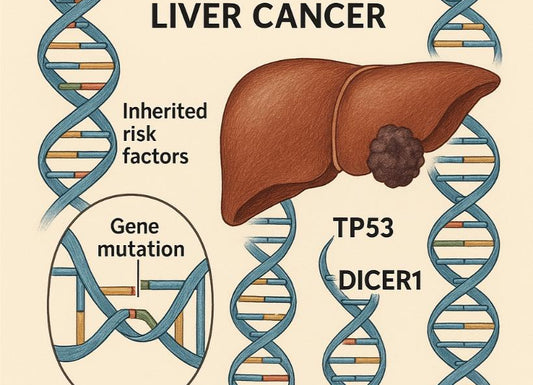Bronze Diabetes: Understanding This Rare Form of Iron Overload
 Written By
Blen Shumiye, MD
Written By
Blen Shumiye, MD

The term “bronze diabetes” may sound unusual, but it refers to a serious medical condition known as hemochromatosis, a disorder in which the body absorbs and stores too much iron. Over time, this excess iron builds up in organs such as the liver, pancreas, and heart, leading to damage and dysfunction.
The name “bronze diabetes” comes from the combination of two hallmark symptoms: darkened (bronze-colored) skin and diabetes caused by pancreatic damage.
This article explains what bronze diabetes is, why it develops, and how it’s diagnosed and treated.
What Is Bronze Diabetes?
Bronze diabetes is not a separate disease but a complication of hereditary hemochromatosis, a genetic condition in which the body’s iron regulation system fails, causing iron overload.
When excess iron deposits in the pancreas, it damages the insulin-producing cells, leading to diabetes. At the same time, iron deposits in the skin cause a bronzed or grayish tint. The combination of these findings led doctors in the early 1900s to describe the condition as “bronze diabetes.”
The Role of Iron in the Body
Iron is essential for producing hemoglobin, the molecule that carries oxygen in your blood. Normally, the body tightly regulates how much iron is absorbed from food. However, in hemochromatosis, the body continues absorbing iron even when stores are full, resulting in toxic accumulation.
Over years or decades, the excess iron deposits in organs, causing damage that can lead to:
-
Liver disease or cirrhosis.
-
Diabetes mellitus.
-
Heart arrhythmias or heart failure.
-
Joint pain and arthritis.
-
Skin hyperpigmentation (bronzing).
Causes of Bronze Diabetes
The most common cause of bronze diabetes is hereditary hemochromatosis, an inherited disorder caused by mutations in the HFE gene.
There are two main forms:
-
Primary (genetic) hemochromatosis: Caused by inherited gene mutations leading to excess iron absorption.
-
Secondary hemochromatosis: Caused by repeated blood transfusions, chronic liver disease, or other conditions affecting iron metabolism.
Risk factors include:
-
European ancestry (especially Northern European).
-
Having two copies of the C282Y mutation in the HFE gene.
-
Male sex (men are more likely to develop symptoms earlier).
How Iron Overload Causes Diabetes?
In bronze diabetes, iron accumulation damages the pancreatic islet cells, which are responsible for producing insulin. Without enough insulin, blood sugar levels rise, leading to diabetes.
At the same time, iron deposits in the liver worsen insulin resistance and disrupt glucose metabolism, compounding the problem.
This dual mechanism of insulin deficiency and resistance makes diabetes management more challenging in hemochromatosis patients.
Symptoms of Bronze Diabetes

Bronze diabetes often develops gradually. Early symptoms may be vague, but as iron overload worsens, signs become more noticeable.
Common symptoms include:
-
Fatigue or weakness.
-
Joint pain (especially in hands or knees).
-
Darkened, bronze, or gray skin tone.
-
Abdominal pain or liver tenderness.
-
Loss of libido or impotence in men.
-
Irregular heartbeat or chest discomfort.
-
Excessive thirst or frequent urination (from diabetes).
Diagnosis
Early diagnosis is essential to prevent organ damage. Your doctor may order several tests to confirm iron overload and assess its effects on the body.
Common tests include:
-
Serum ferritin: Measures stored iron in the body.
-
Transferrin saturation: Indicates how much iron is bound to transport proteins.
-
Genetic testing: Checks for HFE gene mutations.
-
Liver function tests: Assess possible liver damage.
-
MRI or liver biopsy: Detects iron buildup and cirrhosis.
If diabetes symptoms are present, blood glucose and HbA1c levels are also tested.
Treatment for Bronze Diabetes

The goal of treatment is to remove excess iron and manage diabetes.
1. Phlebotomy (Therapeutic Blood Removal)
The primary treatment for hereditary hemochromatosis involves regularly removing blood similar to donating blood to lower iron levels.
Typically, about 500 mL of blood is removed weekly or biweekly until iron levels normalize. Maintenance therapy may continue every few months for life.
2. Iron Chelation Therapy
If phlebotomy isn’t possible (for example, in anemia or heart failure), iron-chelating medications such as deferoxamine or deferasirox help remove excess iron.
3. Diabetes Management
Because pancreatic damage may be irreversible, insulin therapy or oral diabetes medications may be necessary. Maintaining good blood sugar control reduces the risk of further organ damage.
4. Liver and Heart Care
Lifestyle changes such as avoiding alcohol, maintaining a healthy weight, and monitoring liver function help protect affected organs.
Curious if your liver is healing? Read about signs your liver is healing.
Diet and Lifestyle Tips
While diet alone cannot treat hemochromatosis, it can help limit iron accumulation.
Recommended:
-
Eat a balanced diet rich in vegetables, fruits, and whole grains.
-
Drink tea or coffee with meals (they reduce iron absorption).
-
Choose lean proteins and plant-based sources of iron.
Avoid:
-
Iron supplements or multivitamins with iron.
-
Vitamin C supplements (increase iron absorption).
-
Raw shellfish (increased risk of infection).
-
Excess alcohol.
Discover more about the hemochromatosis diet and how it helps manage iron levels.
Prognosis
With early diagnosis and treatment, people with bronze diabetes can live long, healthy lives. Regular monitoring and iron removal therapy prevent most complications.
However, if untreated, hemochromatosis can lead to:
-
Cirrhosis and liver cancer.
-
Heart disease.
-
Severe diabetes.
When to See a Doctor

You should see your healthcare provider if you experience:
-
Unexplained fatigue or weakness.
-
Bronze or gray skin tone.
-
Family history of hemochromatosis or iron overload.
-
Diabetes that is difficult to control.
A simple blood test can detect high iron levels before complications develop.
The Bottom Line
Bronze diabetes is a serious but treatable condition resulting from excess iron buildup that damages the pancreas and other organs. Early diagnosis through blood tests and genetic screening can prevent long-term complications like cirrhosis, heart failure, and advanced diabetes.
With proper treatment, including iron reduction and glucose management, most people can lead full, healthy lives.
Want to check your iron and blood sugar levels from home?
You can take an at-home metabolic and iron panel test through Ribbon Checkup and get results instantly.
Explore metabolic and iron health tests
References
Brazier, Y. (2020, January 30). Everything to know about hemochromatosis (Iron Overload). Retrieved November 10, 2025, from Medicalnewstoday.com website: https://www.medicalnewstoday.com/articles/166455#types-and-causes
Bronze Diabetes - an overview | ScienceDirect Topics. (n.d.). Retrieved from www.sciencedirect.com website: https://www.sciencedirect.com/topics/agricultural-and-biological-sciences/bronze-diabetes
Hemochromatosis - Symptoms and causes. (2025). Retrieved November 10, 2025, from Mayo Clinic website: https://www.mayoclinic.org/diseases-conditions/hemochromatosis/symptoms-causes/syc-20351443
Mohajan, D., & Mohajan, H. K. (2023). Bronze Diabetes: A Common Genetic Disorder Due to Systemic Iron Overload. Journal of Innovations in Medical Research, 2(8), 1–7. https://doi.org/10.56397/jimr/2023.08.01
Porter, J. L., & Prashanth Rawla. (2024, October 6). Hemochromatosis. Retrieved November 10, 2025, from Nih.gov website: https://www.ncbi.nlm.nih.gov/books/NBK430862/

Dr. Blen is a seasoned medical writer and General Practitioner with over five years of clinical experience. She blends deep medical expertise with a gift for clear, compassionate communication to create evidence-based content that informs and empowers. Her work spans clinical research, patient education, and health journalism, establishing her as a trusted voice in both professional and public health spheres.



